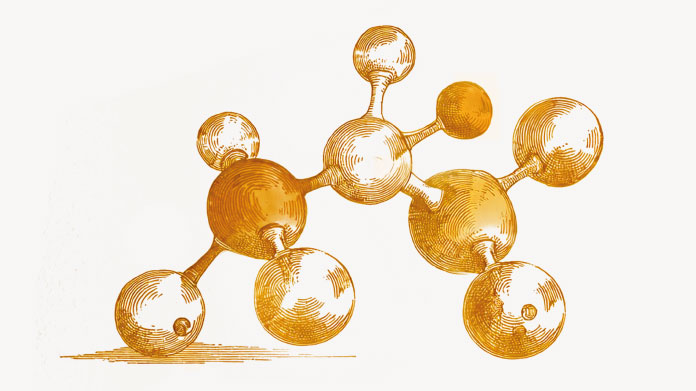
What exactly is salmonellosis?
Salmonellosis is infection of the body by salmonella, a type of bacteria that lives in the gut of certain animals including cattle, poultry, reptiles, fish and shellfish. In humans, salmonella is a pathogen which means it causes problems when allowed to grow in the body.
What causes this infection?
Salmonella is not normally present in the human body but can be transmitted when we ingest food contaminated with it - usually raw or lightly-cooked products such as eggs, meat, fish and milk. Examples of salmonella infection include the recent scandal of contaminated baby milk, and the US salmonella epidemic in 1994 caused by contaminated ice cream in which more than 220,000 people were infected...
The risk of salmonella infection from cooked foods is lower, as the cooking process kills the bacteria. Nevertheless, prepared products can sometimes become contaminated after the cooking stage, primarily as a result of unsanitary manufacturing and storage conditions. When a case of salmonella infection is reported, an enquiry is quickly launched to establish the contamination’s origin and recall the contaminated products.
What are the consequences of salmonellosis?
The symptoms of salmonellosis depend on the type of salmonella responsible for the infection. In industrialised countries, infection is often due to a type of Salmonella called ubiquitous or non-typhoid. This bacteria causes gastroenteritis, ie, inflammation of the digestive system, producing abdominal pain, nausea, vomiting and diarrhoea.
Generally speaking, the first signs of salmonellosis appear between one and three days after contamination. In healthy adults, symptoms usually subside after 3-5 days. In more vulnerable people, such as young babies, the elderly and immune-suppressed individuals, the risk of complications from salmonella infection is greater and immediate medical intervention is usually recommended.
How can you prevent salmonella infection?
Salmonellosis is currently considered the second most significant cause of food-borne disease. It therefore makes sense to know how to protect yourself from infection. In this regard, health professionals generally recommend:
- checking a product’s ‘use-by date’;
- eating products as soon as possible once opened, and the same for home-made dishes;
- maintaining the cold chain by refrigerating eggs, meat and fish;
- separating raw and other foods in the refrigerator;
- cleaning the refrigerator regularly;
- washing your hands and cooking utensils after any contact with raw products;
- cooking raw food or reheating food at a minimum temperature of 65°C.
In addition, scientific research has identified powerful anti-bacterial agents able to kill salmonella. Among these are the active principles in neem, an Indian tree recognised for its many therapeutic virtues. Researchers believe it to have anti-bacterial, anti-inflammatory, anti-pyretic, anti-ulcer and anti-tumour effects. Lactoferrin also provides excellent support for the prevention of salmonellosis. This glycoprotein helps protect against bacterial infection and boost the body’s own defences. Similarly, probiotic blends such as Probio Forte, help support the immune system and reduce the risk of salmonellosis-related gastroenteritis.
6 Days
Delivery is prompt and I never saw a…
Delivery is prompt and I never saw a quality problem with the manufacturing. It is not possible to assess efficacy on a personal basis, since too many factors come into play. Efficacy can only be assessed statistically with a sufficient number of cases.
Roger De Backer
7 Days
I collaborates with the Supersmart…
I collaborates with the Supersmart more than 10 years. Every thing is going good. Quality of the things is good. Delivery comes in time. Five stars definitely !!!
Oleksiy
7 Days
All good
Simple, frictionless site, easy ordering, good delivery updates and execution.
Chris Robbins
9 Days
I feel better
I feel better
Peter Ammann
9 Days
Prompt delivery
Prompt delivery
JAKUB Radisch
11 Days
My new go-to for top quality supplements!
I am buying more and more of my supplements from this superb, high quality company. Cannot recommend it enough. Plus, excellent customer service with a quick, helpful team and speedy deliveries. Highly recommend Supersmart!
Cecilie H.
14 Days
SUPERSMART WHAT ELSE👍
SUPERSMART WHAT ELSE👍
DIEDERLE Christophe
17 Days
Excellent quality products with…
Excellent quality products with innovative formulas, as someone who has been suffering with acid reflux, these supplements have been lifesavers.
Oriana Moniz
17 Days
high quality supplement!
high quality supplement!
GALANT
18 Days
Good service prompt delivery
Good service prompt delivery
Mrs Marcella Reeves
23 Days
I like your clear explanation
I like your clear explanation. And how to make a choice of products for a specific health problem
Ingrid
29 Days
Great product and it arrives quickly.
Great product and it arrives quickly.
SOMMARIVA Gianni
30 Days
Excellent products and fast service.
Excellent products and fast service. What do we need more?
Margarida
34 Days
The variety of products is amazing
The variety of products is amazing, the offers are good and the sending is very fast. I just miss having a bit more of guidance about combinations, possible interactions, etc.
Maria Angeles Verdu
36 Days
It was quick
It was quick.
Timo Antero





